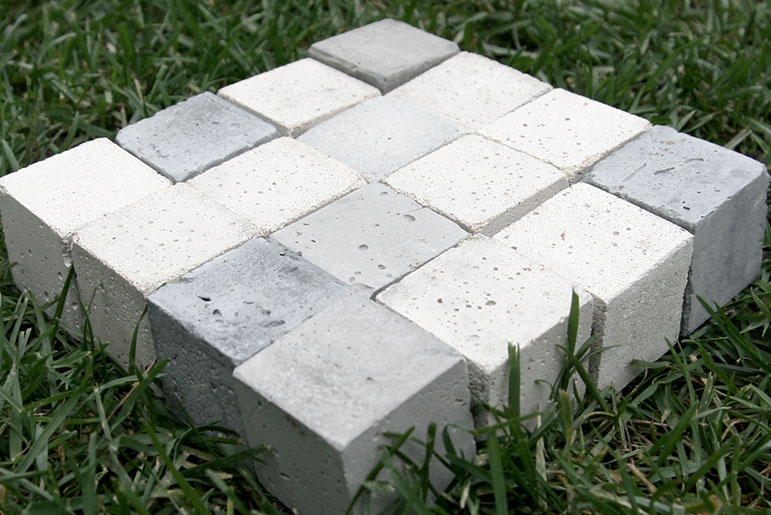Since it was patented in 1824, Portland Cement (PC) – the basic ingredient of concrete, mortar, stucco and non-specialty grout, has become the dominant construction material worldwide. One of the problems with this dominance is that the manufacture of Portland Cement is destructive to the environment, making a significant contribution to global carbon emissions.
The lifecycle of Ordinary Portland Cement (OPC) manufacture begins with the quarrying of raw materials, mainly limestone and clay. These materials are crushed through several stages into a powder form, then mixed with ingredients such as iron ore or fly ash and ground. At the end of this process the finely ground material (or slurry) is then fed into cement kilns, where it is fired at high temperatures to drive off elements in the form of gases and result in a new substance called clinker. Clinker comes out of the kiln and is then fed through coolers – after this process it looks like grey balls about the size of marbles. These are then shipped to cement plants who grind it and mix it with small amounts of gypsum and limestone. The product is then bagged up for use by ready-mix concrete companies in a variety of construction projects.
One way to approach the reduction of carbon emissions in concrete production is to move away from traditional Portland Cement production and look to biomimicry. That is, draw inspiration from and imitate models, systems, processes and elements found in nature.
One form of inspiration that can be emulated is the natural process of carbon sequestration accomplished by marine organisms that have exoskeletons, or shells. When these organisms die, their shells disintegrate and form carbonate sediments, such as limestone, which are permanent, safe carbon sinks.
Cement, concrete and other composition materials can be manufactured to be more ‘shell-like’. As the burning of limestone (calcining) is a potent source of CO2 emissions, synthetic calcium carbonates and magnesium silicates would be utilised instead. A cement using these materials can produced at temperatures far below those employed in conventional kilns. Even better these lower temperature kilns could run on biomass fuels instead of more conventional energy sources like coal power.
The overall idea is that you can sequester carbon in a cement that absorbs it as it cures – creating a carbon-negative cement. While the adoption of manufacturing carbon-negative cement still has a ways to go in terms of adoption, it appears to be a great way forward for the manufacture of a construction material that absorbs carbon dioxide rather than being a primary source of man-made emissions.
One innovation that is being increasingly incorporated into the manufacturing process for concrete is to include waste materials. For instance many of the new ‘eco’ concretes now available in the market, replace over one-fifth of the cement content with a geopolymer binder system made from the chemical activation of two industrial waste by-products – blast furnace slag (waste from iron production) and fly ash (waste from coal fired power generation). This alternative binder technology reduces the carbon emissions associated with normal Portland cement by 80 – 90%, and also has a much lower embodied energy.


